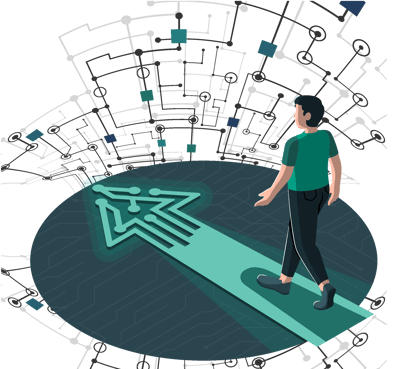Trends in single cell sequencing: Spatial transcriptomics
Spatial transcriptomics is a fast-moving and quickly growing field, although its technical complexity remains a challenge. Early adopters in industry are now beginning to explore its potential - which is why spatial transcriptomics is the third trend that we’ve identified in the field of single cell sequencing.
Applications of spatial transcriptomics
Currently, spatial transcriptomics is most heavily utilised in niche fields like neuroscience, cancer, and developmental biology, for which spatial information is exceedingly important to understanding the underlying biology. In the case of cancer, for example, spatial transcriptomics technologies can now provide novel insights into tumour microenvironments, building upon well-established histopathological standards. However, spatial technologies are also starting to be leveraged in very early target and biomarker discovery phases.
One of the major challenges with adopting spatial technologies is that highly specialised bioinformaticians are still required for analysis of spatial transcriptomics data. In addition, compared to canonical single cell sequencing, spatial transcriptomics is still less standardised, scalable, and straightforward to set up, and therefore it’s important to have dedicated expertise and core facilities, making it relatively expensive to generate high-quality data.
However, as we covered in a recent blog article, spatial transcriptomics has a lot of potential, for instance for analysis of cell-cell interactions in tissues, identification of cell clusters that take into account both gene expression and spatial location, and detection of spatially variable genes. So, what is needed for this powerful technology to be more widely adopted?
What will happen next in spatial transcriptomics?
Looking back at single cell transcriptomics more generally, one of the developments that allowed the technology to boom was the development of standardised pipelines for data processing and analytics. Several groups contributed to the democratising of single cell transcriptomics analytics, and paved the way so that anybody could extract some information out of their data - although we do still recommend working with a data analytics expert to extract all the value from single cell data.
For spatial technologies to be more widely adopted, we predict that developments will be needed in two areas:
- Broadly applicable tools and software. Many of the algorithms currently used for spatial transcriptomics are developed for and applied in niche settings, and therefore don’t yet have proven utility in a wider spectrum of applications.
- Standardised protocols. The technology itself is still rapidly evolving, and established protocols, for instance for preparing tissue samples, are not yet easily available. Increased standardisation in the wet lab will also be needed in order for spatial technologies to be more broadly adopted.
How BioLizard can help
Although spatial transcriptomics is an emerging technology, the team at BioLizard has already acquired the expertise needed to make the right analytical decisions and extract value from spatial transcriptomics data.
Since we understand both the biology and the technology, we can also help you decide if spatial transcriptomics will truly add value for you, or if an alternative technology might be better suited to address your biological question. These cutting-edge technologies are a large investment, and therefore it is key to have an analytics partner involved early in order to make the right strategic decisions.
Are you looking for a data analytics partner to get the most out of your single cell sequencing experiments?
Then reach out to BioLizard today to get started!
P.S. Did you enjoy this article? Then be sure to read about the first and second trends in single cell sequencing that we identified!




